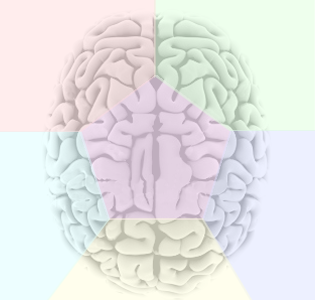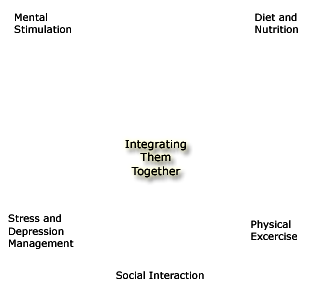Don’t Waste Your Money: What Really Works in Reversing Cognitive Decline & Why
 So you know someone who’s not as sharp as they used to be. Maybe they’re having difficulties with their memory or mood. You want them to get better soon, but at minimal cost – you don’t want them to waste their money. What should they do? There are many options, especially with supplements. Many products and voices with fantastic claims. Which course should they choose?
So you know someone who’s not as sharp as they used to be. Maybe they’re having difficulties with their memory or mood. You want them to get better soon, but at minimal cost – you don’t want them to waste their money. What should they do? There are many options, especially with supplements. Many products and voices with fantastic claims. Which course should they choose?
The Most Common May Not Be The Best Approach
The most common approach involves conducting a little experiment on a product we’ve heard about, saw advertised or which helped a friend. Maybe we saw an ad about Prevagen, the jelly fish protein, shown to improve memory, or curcumin, that reduces inflammation in the brain, or vitamin B-12 or CoQ10, essential to energy production, and there’s a plethora of great herbs and extracts – Rhodiola, resveratrol, Green tea, Marijuana CBD & Omega-3’s, and many more. And they all, have “good” research and testimonials to support their value.
So we choose one. Take it for a month and see what it does. If we notice a difference great! We’ll stay on that. If not we’ll drop that and move on to something else. After all, that’s the approach most doctor’s take with most conditions. For each problem there is a drug, that should fix that, in relatively short order. If they do, great! Stay on it. If not, move to something else. That works, right? Or does it?
Drugs often work quickly, and some are pretty good at disrupting chemistry to reduce things out of whack like anxiety, agitation, pain, bad bugs, blood sugar, LDL cholesterol, etc. But they don’t often build or repair tissues. With some notable exceptions, most drugs only address symptoms. They don’t usually address the underlying issues. So while they often alleviate the symptoms they don’t often provide a cure, rebuild tissues or correct the cause of the underlying disorder. And in Alzheimer’s they don’t even do much to control the symptoms. At least not for long. Moreover, in more than 130 trials costing billions, no drug has been shown to address root causes and significantly reverse the disease process, even in the early stages.
What Works – A Better Approach
While the one intervention at a time approach, has been the standard for a long time, researchers are now noting this may be one of our biggest obstacles to progress. Why? Because human biochemistry and systems are much more complex and interdependent than this model suggests. And while this “one at a time” approach may be necessary for potentially toxic drug interventions, that is not in line with how the body and brain work. The body with it’s brain is an incredibly complex organism with billions of nutrient dependent parts that must work in concert, with a myriad of interdependent systems.
We know the brain is a nutrient hog, that it requires a variety of fats (lipids), proteins (amino acids), vitamins, minerals, trace minerals, probiotics, antioxidants, and many other micro and phyto nutrients in order to maintain its structures, create the energy, enzymes, hormones, catalysts, cofactors, neurotransmitters, signaling molecules, immune system, and other things that it needs to function properly. Moreover, each of these actions and others requires a variety of nutrients working in harmony.
Here is one example of the complexity of this problem. One of the essential needs for the brain to make memories is energy. Every cell in our brain has tiny energy generators called mitochondria. However, as we age our mitochondria begin to deteriorate, and produce less energy and more free radicals – a byproduct of oxygen and energy generation – like the exhaust from an engine. These free radicals if not kept in check cause oxidation, a type of rusting in our body that can damage cells.
So a healthy body produces very powerful antioxidants to quench or control these free radicals. Biologists now know that mitochondrial decline and oxidative damage from free radicals are primary causes of the aging process – physical and mental decline. People with Alzheimer’s for example tend to have a lot more oxidative damage in their brain, and much less energy production.
So what do our mitochondria need to stay healthy? To produce more energy and fewer free radicals? Mark Hyman, MD in the Ultra Mind Solution identifies 12 nutrients essential to the function of our mitochondria. Here is a quote from his book on this subject.
“A number of basics are essential, including omega-3 fats, which make up the membrane of the mitochondria, and the two B vitamins, niacin (B3) and riboflavin (B2), which are necessary to help the enzymes involved in turning food into energy in our mitochondria. We get others from our diet or our bodies produce them. But as we age, or are exposed to any type of physical, toxic, or emotional stress, we need to replace these nutrients.
The top mitochondrial nutrients are acetyl-L-carnitine, alpha lipoic acid, coenzyme Q10, NADH, D-ribose, magnesium, riboflavin, niacin, and n-acetylcysteine (NAC).” [Also important are thyroid hormones, Thiamine (B1) Pantothenic acid (B5), Biotin (B7), Pyridoxal (B6), folate and cobalamin (B12) https://www.ncbi.nlm.nih.gov/pubmed/16765926]
Dr. Bruce Ames, of UC Berkley has shown that supplementing with the above noted nutrients can “reduce mitochondrial injury and the effects of aging on the brain, including memory, learning, and speed of motor function. The key he says is not to get focused on just one nutrient, but to use a whole team of natural compounds to help the body function the way it was designed.” (p. 258)
A Broader Spectrum Personalized Plan Seems Best
Energy production is just one part of the memory making process, there are at least 6 additional structures or system that have to be functioning well, all of which require a variety of nutrients and good circulation.
In fact Dr. Bredesen at UCLA uses the number 36, noting that there are at least 36 potential glitches or gaps that contribute to cognitive decline. He compares Alzheimer’s to a house hit by a hail storm with potentially 36 holes in it’s roof. Taking a few vitamins, minerals. herbs, going for walks, brain games, etc, may help patch some of these holes, but you will still have leakage, loss of energy, and continued cognitive decline if you don’t patch all of the holes, or at least a large majority of them.
Research on memory loss with single nutrients like vitamin E, B-12, folic acid, DHA, L-carnitine, etc., have generally been relatively ineffective in reversing cognitive decline. And often that has been interpreted to mean they are not helpful. But in the studies where these were combined with other nutrients, significant positive effects have been achieved. And even moreso, when a wider variety of nutrients are combined with other healthy foods, mental and physical activities, etc. Taken together these can produce a powerful synergistic effect!
Moreover, the brain is pretty good at taking care of itself. It has a variety of repair systems etc, to prevent structural and functional decline. So bottom line, if you know someone experiencing significant cognitive decline, especially a senior, that means they likely have a variety of things going wrong upstairs. A variety of holes in their roof, to use that analogy. And one or two or even 6 or 8 vitamins, or a few lipids, proteins, herbs, extracts etc, will likely not be enough to turn things around for long.
Have you ever wondered why some medications, like antidepressants, can work for a while but then stop working? One reason is because these medications require other nutrients or “cofactors” to be effective. But once these other cofactors, like folic acid and magnesium, become depleted and our body becomes deficient, the meds stop working.
This is why scientists have now come to the realization that there will never be a single pill that will consistently arrest or prevent Alzheimer’s. And every program in the world, that is now making good progress in arresting the various forms of cognitive decline uses a combined, multifactor, synergistic approach.
For example here are quotes from articles involving two prominent traditional researchers in this field. First Dr. Reisa Sperling, director of the Center for Alzheimer’s Research at Harvard Medical School, in 2013 noted “This year is different because multiple mechanisms are being explored and there’s a tremendous revival of faith in the anti-amyloid approach.’ [Which actually never panned out, but…] She expresses hopes for “the development of several drugs that work in different ways, so they can be used together as ‘a 1-2-3 punch’ against the disease. Similar combination treatments are currently used in the treatment of cancer and cardiovascular disease.”
Dr. Ronald Petersen, director of the Mayo Clinic’s Alzheimer’s Disease Research Center, thinks Sperling is right about the multi-prong approach. He noted, “Another 5 to 8 years down the road, even before symptoms appear, we will be treating with a cocktail of therapies.”
And in fact that is precisely how progress was achieved in the Finnish/Swedish FINGER study where they reversed cognitive decline in more than 600 Finish seniors. This is the approach Dale Bredesen, MD used at UCLA in reversing 9 out of 10 cases of Alzheimer’s (and now over a 100 more), Vincent Fortanasce, MD of USC, in reversing decline in more than 60 seniors in his clinic near LA, Majid Fotuhi, MD, former science director for the Alzheimer’s Association, who turned around 127 impaired seniors with cognitive impairments, David Perlmutter, MD in Florida, who is doing the same, the American Brain Council, for whom I work, and now dozens of other practitioners and researchers around the world who are now turning around cases of cognitive decline by the hundreds. Every last one of them – who are achieving reversals – is using a similar combined personalized synergistic approach. Because these disorders of the brain are simply too complex to effectively address in any other way.
Bottom Line
So next time you are tempted to try some new single bottle of something advertised to improve memory and reverse cognitive decline, just remember, if you are over the age of 55 and, especially if you have had this decline for a while the odds are against that single item doing much good. Because it will likely only be addressing one small piece of a much more complex puzzle. It may do some good, but it likely won’t accomplish all that you need to achieve the success and lasting reversal that you desire. As Dr. Bredesen notes, “This is not easy.” There is likely more that needs to be addressed than a couple of pills in a single bottle will fix. One the other hand, it’s helpful to know which supplements are most likely needed, so as not to waste your money on things your body doesn’t need as well.
However, the really good news is that if you get a good analysis done to determine your likely needs and then combine an improved diet, with a variety of supplements specific to your needs, PLUS, a variety of physical and mental activities appropriate for you, improved hearing and vision, stress reduction if needed, maybe meditation, fasting, a good night’s sleep, a medication review, and maybe one or two other things (Bredesen draws from 36 possible interventions) then you have a pretty good chance of achieving success quicker, without further costly decline.
So where can you obtain this needed analysis and how do you find someone who can help orchestrate a plan that will work for you? Unfortunately there are not yet as many clinics who provide this service as is needed. Dr. Bredesen, the Amen clinics, the American Brain Council, and others are working to provides these services throughout the US. And hopefully soon there will be one near you. For more information now on specialists and resources in your area familiar with this approach you can call the American Brain Council at (866) 634-9880 or email me your questions or request at David@ABCBrain.org.
D. Larsen
Prevention Strategies 








- FREE SPECIAL REPORT AND UPDATES
For free monthly updates on the latest practical research related to brain health and memory improvement, and a free 23 page report on How to Prevent or Arrest Alzheimer's, Click here. Recent Comments
Archives
- July 2019
- November 2018
- September 2018
- July 2018
- June 2018
- April 2018
- February 2018
- January 2018
- December 2017
- October 2017
- September 2017
- August 2017
- June 2017
- May 2017
- March 2017
- January 2017
- December 2016
- October 2016
- September 2016
- August 2016
- June 2016
- May 2016
- April 2016
- March 2016
- February 2016
- January 2016
- December 2015
- November 2015
- August 2015
- July 2015
- June 2015
- May 2015
- April 2015
- March 2015
- February 2015
- January 2015
- November 2014
- October 2014
- September 2014
- August 2014
- July 2014
- June 2014
- April 2014
- March 2014
- February 2014
- January 2014
- December 2013
- November 2013
- October 2013
- September 2013
- August 2013
- July 2013
- June 2013
- June 2012
- February 2012
- January 2012





